In college, I participated in an internship at a local hospital—as an understudy within the cardiac and pulmonary rehab programs. Most of the people I worked with were elderly heart patients that had undergone everything from a simple stress test to full-blown bypass surgery, most of whom had never trained.
Despite their level of ability, most were eager to earn their strength and mobility back once they were taught how to do so. I witnessed and heard many stories during that year of patients regaining enough strength and vitality to play with their grandchildren, go camping, vacuum the house, or do yard work for the first time in decades.
This initially set me on my path within the fitness industry. I knew the positive impact of teaching basic strength and mobility would show me how strength truly does have a greater purpose—a foundation of the StrongFirst Code.
Whether it concerns a grandparent, a spouse, a relative, or ourselves, there will come a time when we all must deal with the aging process hands-on. How we prepare ourselves for this stage of life is important and can greatly impact our experience of it.
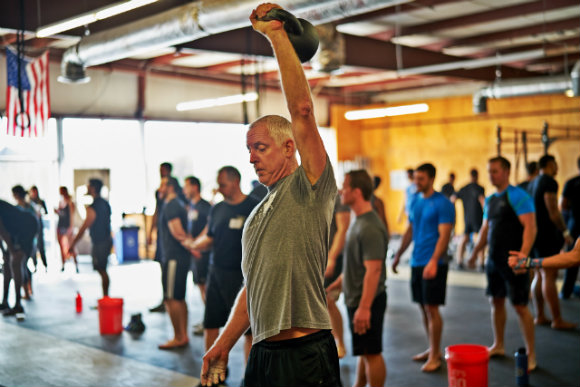
Our Aging Population
The facts show us the aging population will continue to grow, which is a good thing because we’re living longer. According to a study by the US Census Bureau, in 2010 13% of the US population was 65 or older. By 2030, that number is projected to increase to 20%, a 53% increase. Living longer is great, but what we do with those extra years and how we increase the quality of those years should be a priority.
Many aging adults will have to enter assisted living facilities (ALF) or nursing homes. The activities these individuals typically need assistance with are things many active adults take for granted: bathing, dressing, toileting, walking, getting in and out of bed, and eating. A common thread among these needs is a lack of strength and mobility—the opposite of which is what we lay as a principle foundation in StrongFirst.
The declining health of this demographic will have a considerable economic impact. The average cost of an assisted living facility per person runs between $3,000-4,500 per month. The chart below shows most of the cost associated with ALF comes out of personal and family assets. Government programs, which are debatably unsustainable, account for the rest. Which leads us to potentially conclude that the burden will fall on the shoulders of the individual, family, or both.
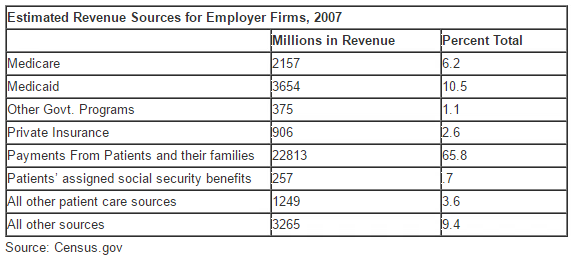
According to the CDC, 55% of all unintentional injury deaths for 65+-year-old adults were due to falls, a rate that nearly doubled between 2000 and 2013. Falls happen for many numerous reasons and can’t be predicted, but strength training via squats, single-leg stance drills that improve balance, push-ups, carries, and teaching an unweighted get-up could be the answer for many to prepare for such an unpredictable event, and possibly avoid it altogether.
The StrongFirst community is primed to make a positive impact with this demographic. If we simply teach the basics of our principles, we are doing a huge service that could be potentially lifesaving.
Training for Quality of Life
As my young children grow and become more active, I have started to see my training through a different lens. I now ask myself two questions that test what I choose to put myself through:
- Is this sustainable through smart progression or regression?
- Does this promote my quality of life and longevity?
I will turn forty this year and my kids will be seven and five. If my math is right, the youngest will be graduating high school when I am 53. Depending on many different factors, I might be sixty before my kids have kids of their own. I won’t be such a young man at that point anymore, but I would like to be an active grandparent that can do things with my grandkids. My vision for this stage of my life is to be in the photographs and videos of the mountain hikes, bouts of tag, and playing in the park—not anxiously waiting in my recliner at home to see those photos.
My friend Al Ciampa has inspired me to adopt a couple of thoughts within this paradigm. After some initial questioning of new and prospective students, he then asks them about long-term goals. He tells people everyone’s answer should be, “To wipe your own butt on your last day.” This is a funny way to ask, “Is your long-term goal to be functionally independent until the day you die?” Based on the statistics and projections, for many this will not be the case.
“Not everyone needs to squat heavy, but everyone needs to squat.”—Pavel
The second idea Mr. Ciampa has inspired me with is to focus on what you can control, which is the process, not the outcomes. If you have an aging student who has a safe swing and get-up, then the Simple goal in Simple & Sinister is far less important than the process of just showing up and doing the work.
This can be said for the many seventy-plus and even eighty-plus-year-old lifters I see at powerlifting meets. They are far from their prime and probably not pushing their bodies to their peak, but the process and journey of getting to the platform is what matters and what is keeping them active and independent. I think many of us get caught up with personal bests and records and fail to realize the huge goal accomplished in just showing up.
“Perhaps the most valuable result of all education is the ability to make yourself do the thing you have to do, when it ought to be done, whether you like it or not; it is the first lesson that ought to be learned; and however early a man’s training begins, it is probably the last lesson that he learns thoroughly.”—Thomas Henry Huxley
How This Applies to Your Students
For me, the idea of process versus outcome does not diminish my pursuit of strength goals or prevent me from occasionally participating in a powerlifting meet or StrongFirst’s Tactical Strength Challenge. As an analyst by nature, I constantly contemplate the risk-to-reward ratio when setting my goals. It’s important to know the risks involved and be humble enough to put the process before the outcome, while knowing (and being okay with the fact) that the outcome may never happen.
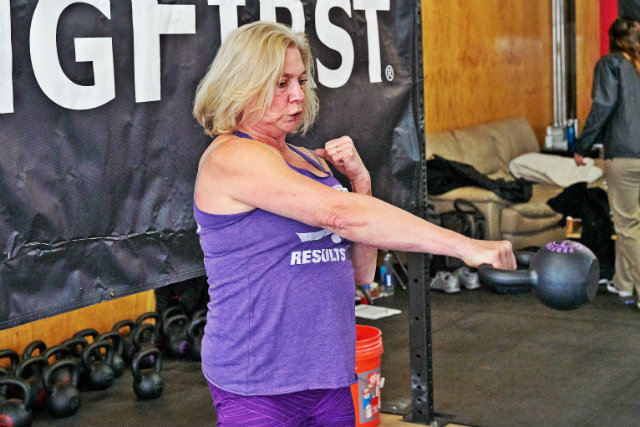
When designing programs or teaching new exercises for our students, it is important that we have an answer for the two questions I mentioned above:
- Is this sustainable through smart progression or regression?
- Does this promote their quality of life and longevity?
So how can this be applied? Here are a few of the skills we teach within the StrongFirst system that can be regressed to the appropriate level to help an aging athlete. All of this can be learned without a prerequisite level of ability at any of our One-Day Courses—Kettlebell, Bodyweight, Barbell—or by seeking out a certified StrongFirst instructor.
Here are some variations that can be regressed for the appropriate student:
Deadlift:
Push-up:
Swing:
Squat:
Get-up:
Maintain healthy gait with single-leg stance practice:
- Unweighted single-leg deadlift practice
- Carries: symmetrical and asymmetrical
- Go for a short walk outside several times a day
Our Greater Purpose
In summary, we have a large part of our population that will spend their last days in a place that’s not their home or needing help with basic daily tasks. There’s an even larger group that will be challenged with those circumstances not long from now.
We don’t have to wait for a solution or program to be created or for someone to tell us what to do. We teach that strength is a skill, which can be acquired with instruction, and obtained at any age.
Strength has a greater purpose right now for those around us and whom we are privileged enough to impact. If the remaining years for our students (and ourselves) are of the highest quality possible, then focusing on the process was definitely worth the effort.
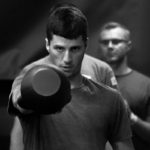
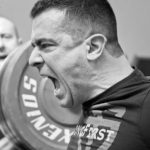
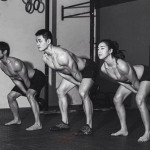
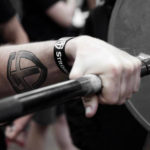



I’m really happy to have found this site and the information provided that is helping me to show up every other day.
I’m was a 70 y.o. male with a replaced Rt. knee joint, surgically repaired rotator cuff, a balance disorder and a potato shaped physique due to potato chips and no activity which=223 lbs.
I’m now 71. But I now do a 65 minute 3 circuit Kettle bell routine that I am relatively confident in. I’m still working on competence and control. I now weigh 173 lbs.
My Cardiologist told me, whatever it is your doing, DON’T stop. I look forward to doing my routine every other day with a focus on form, assessment and improvement as opposed to heavier bells, etc.
Thank you!
Jason,
Thank you so much for this article. I’m afraid I am one of those geezers that thinks he’s still 30 years old. (The ones Al Ciampa was warning about). The goal of showing up each day so that I can be there for my bride of 34 years is where I need to focus.
Thank you! I shared your article to my FB page.
GRRRREEEATT ; JASON helped me gain a more realistic perspective and realize that having fractured c5 and c6 once and now also blessed with a titanium hip from a mountain bike spill that i can quit whining inside about maybe never winning a girevek competition and be greatful for the swings, cleans and other stuff. Hopefully many family doctors will give this a lookover as well. GOD Bless Pavel, Jason and other trainers who are doing this work
Thank you, Richard! These kind of messages fuel my fire to keep doing what I do. Strong wishes to you and your family!
Great piece, Jason! I highly value our friendship, and have learned a lot from you.
This is the topic that needs to be explored; the baby boomers are quite a large component of society and are getting on in age. Aging need not be a sentence of dysfunction and discomfort. It is lifestyle choices that unfold our level of function.
Of course, the word “butt” is not actually part of my verbiage 😉
Thank you, Al! And the feeling is mutual. Obviously, I had to make a minor (G-rated) edit for the site. I’m sure the message was heard loud and clear, though! 😉
Much needed article in the training arena. Not only does the strength assist with balance in advanced age, the resistance applied with weight training assists in bone strength should the mature athlete happen to fall.
Thank you, Matt!
I’m just shy of 72 and have been kettlebelling for more than 10 years. The aging process has given me a prosthetic left shoulder joint, a heart valve replacement, scoped knees and a few other minor ailments. So I have some limitations of form, volume, and intensity. I’ve had the privilege of working with an outstanding Strong First instructor for a couple years who designed workouts for me that I could manage. My “outcome” remains the perfect swing. There is nothing that physically prevents me from doing it. I’m still a long way from the “low swing.”
What a great story, Alan! We’re all looking for that “perfect” swing…every time I approach a bell is a chance to shoot for it. Thanks!
As a 60-something active senior I’m glad to see an article like this. Too often fitness and strength-training books are written from the perspective of a young instructor for a young audience. But what might be appropriate for a young man or women can be counter-productive for a senior, particularly a senior who might not have been an athlete or fitness enthusiast in their early years. It took me some time to come to grips with the fact that inevitably, my ability to recover after hard sessions is not what it once was in my twenties or even forties.
I welcome more articles like this one. I especially like the idea that it is the process — the journey, if you will — as much as the goals. If you show up and do the work, strength will follow. Maybe not on the timeline we wish, but it will happen.
Steve,
I agree with you about seniors who never had a background in fitness, but I would suggest that it is the seniors who had a background in fitness when they were young, then quit due to life, and now are trying to get in shape some 40 years later… these can be the most dangerous cases if they are not properly educated.
Really enjoyed this article Mr. Marshall. This is a very important topic that isn’t talked about enough. Thank you very much for sharing
Thanks for the kind words, Matt!
This inspires me and refines and affirm the vision I have for my self and my clients. Important work, thanks!
Thank you, Kim!
Excellent and important article Jason!
Thank you, Rif! You have definitely inspired me along the way on this topic! Look forward to seeing you soon!
I just celebrated my 69 birthday and have been doing kettlebell classes for almost 4 years. So thankful we have such great instructors in the greater Seattle area. And, so good to see an article about my age group. It’s never too late to learn!
Kettlebells agree with my body, the previous injuries I’ve had, as well as the spinal degeneration I’m experiencing as I age. I need all the muscle strength I can achieve.
Thank you, Sharon, and keep up the good work!
Jason,
Excellent article. The statistics are eye-opening. Thank you for writing this.
Thank you, Linda!
This is such a great article on so many levels. Many of the wonderful people I get to work with are over 60. Nothing brings me more joy than seeing them exercise for a positive quaility of life. Your write up and references really drives the point across, that we can do our best to help more advanced age clients with their health, well being and get more out of life. Love the use of StrongFirst system for all ages! Great work.
Thank you for the kind words, Sean!